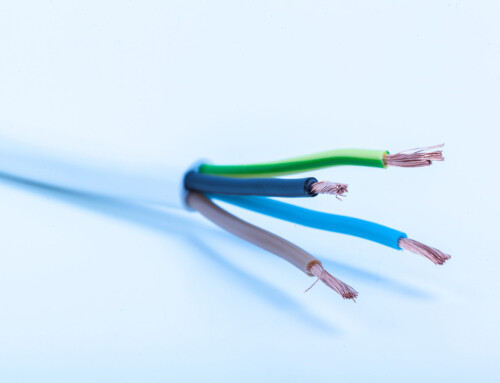Table of Contents
Most of the time, we don’t have to think too much about our electrical wires because they are just there, working in the background. We use these electrical wires every time we flip a light switch, plug in a phone charger, or turn on the microwave.
If you are living in a newly built home or are thinking about building one, you have probably heard of the term “neutral wire.” While most of us know what it does, not all of us are sure what it is. This blog will take a deeper look at neutral wires, what they do and why they are important in our house.
What is a Neutral Electrical Wire?
A Neutral wire is a wire that carries the circuit back to an original power source. Neutral electrical wires are a vital component of any electrical system. They provide an efficient way to transmit electricity from the source to outlets, equipment, and appliances safely. A neutral wire is typically identified by white or gray exterior insulation, while live or hot wires are usually covered with black or red insulation.
The purpose of a neutral wire is to connect the grounded conductor in the circuit back to the main service panel. In a well-built circuit, electricity will flow through both the hot and neutral wires in order for it to reach its destination. Without the proper functioning of both these wires, it would be unsafe for people and objects in proximity since they could become electrocuted by an exposed live wire.
Neutral electrical wires must be used with caution as they carry voltage in certain conditions due to their fundamental role in grounding circuits.
Neutral Wire is Typically White
There are numerous wire identification standards, many of which rely on electrical color codes. However, not all electrical wiring color codes are the same, and some even contradict one another. The vast majority of electrical systems have unique colored plastic shielding on the individual wires within a cord. This allows for keeping the electrical current contained within the wire. It also makes it simpler to see what each wire is, making it easier to work on them. The neutral wire in most typical AC systems is white.
Do we get an Electric Shock from a Neutral Wire?
Do we get an electric shock from a neutral wire? This is a question that many have asked in regard to wiring in our homes and businesses. The answer to this question is both yes and no. On the one hand, a neutral wire carries electricity, but it’s not hot or “live” like the other wires in your circuit. It does not carry the same voltage as the live wire, so you will not get electrocuted if you touch it directly.
However, an electric shock can come from a neutral wire if there is an imbalance between the two wires in your circuit. If one of these wires has too much current running through it, this can cause an electric arc which can result in you being shocked if you were to come into contact with it.
Do We Need to Connect the Neutral Wire to the Ground?
The question of whether or not the neutral wire needs to be connected to the ground is a common one among home electricians. In general, the answer is yes — connecting the neutral wire to the ground is an important safety measure. The main purpose of connecting this wire to the ground is to protect against potential electrical shocks and fires caused by unintentional contact with live wires or faulty wiring.
Connecting the neutral wire can prevent a short circuit in cases where a hot and a neutral wire become crossed in some way. If these two wires are not grounded, they will be energized and cause arcing. This arcing can cause significant damage, such as melting insulation and sparking from electrical outlets, which increases the risk of fire hazards. Additionally, without grounding, too much electricity may flow through other objects that should not have power running through them.
What is the Difference Between a Neutral and Ground?
When wiring a home or any other structure, it is important to understand the difference between neutral and ground wires. A neutral wire is an electrical conductor that carries current from the power source back to a service panel. This helps in balancing the amount of electricity flowing through any circuit. On the other hand, a ground wire transfers excess electricity away from electrical devices and into the earth, which prevents electric shock or fire hazards from occurring when an appliance malfunctions.
The most common type of neutral wire is a white insulated conductor with ribbing along its length, while ground wires are typically bare copper conductors, which can sometimes be green-colored as well. Both types of wires must always be connected securely within their respective outlets and appliances in order for them to function properly.
Final Thoughts
In conclusion, a neutral electrical wire is an important part of any electrical system. Without it, the current would flow without control and could result in serious injury or damage to property. Properly installing a neutral wire is important, as improper installation can be dangerous. Knowing the importance of neutral wires can help people make sure they are properly wired and safe in their homes. If you still have questions about neutral wires after reading this article, be sure to contact an electrician for more information.






